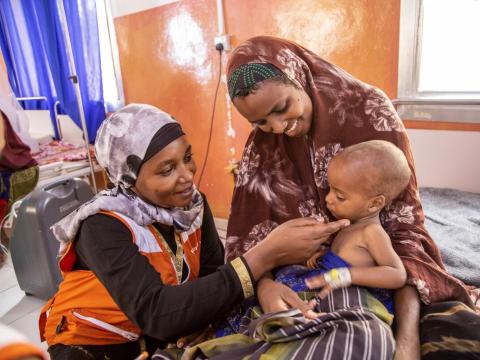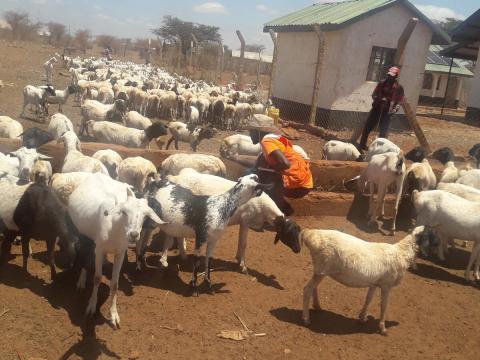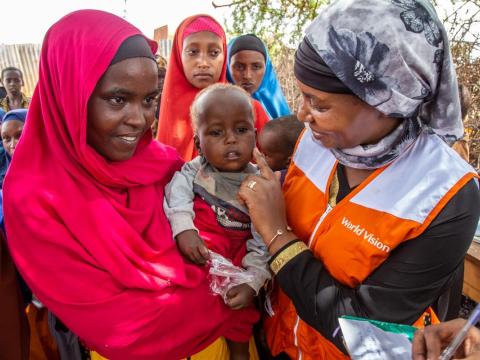
Only God knows whether the hunger crisis can get any worse
Mary mourns the fact that Easter won’t signify an end to going without food for hundreds of millions around the globe.
The hunger situation is worsening by the hour; since humanitarian organisations warned world leaders in September that one person is dying every four seconds of hunger at the most recent United Nations General Assembly, another 4,363,200 people have died.* In Somalia alone, approximately 43,000 people, half of them children under the age of 5, died last year due to the prolonged drought. Up to 34,000 more Somalis may succumb by June.
Today an estimated 222 million people are coping with acute food insecurity in 53 countries –a growth of 64% since 2019. Nearly 1 million of these people are facing catastrophic ‘famine-like’ situations in Afghanistan, Burkina Faso, Ethiopia, Nigeria, South Sudan, Somalia, and Yemen –a 10-fold increase in just the last five years.
Children are at the greatest risk in this crisis as they are more likely to suffer from wasting (low weight for height) and more likely to die due to weakened immune systems. And those who survive often suffer long-lasting impacts on their physical and mental development.
After increasing our efforts to stave off famine, including emergency responses in east and west Africa, World Vision declared the hunger crisis a global emergency in May 2022. The Global Hunger Response initially began by targeting 22 million people in 25 countries; however, due to the ever-changing nature of this worsening situation, this has now been expanded to 30 million people in 28 countries. As contexts reach a point where their situations require a dedicated emergency response to provide the most vulnerable people at risk of starvation with immediate food access and address the crisis’ accompanying direct and indirect impacts, they are added to the Global Hunger Response. In March 2023, as much of the Christian world chose to fast to mark the season of Lent, two new countries: Eswatini and Lesotho in southern Africa, joined this beleaguered group.

The biggest challenge to achieving the Response’s goal so far has been the growing gap between the need that is far outpacing the available/almost static funding. This gap is forcing children and communities to make difficult and dangerous choices with consequences that jeopardise their immediate and long-term well-being. These include engaging in begging, child labour, dropping out of school, sexual exploitation, child marriages, and sharing their humanitarian rations with others within their communities who are equally needy but without support. This interconnection makes it very hard to make any meaningful progress in the short term.
“Poverty leads to a lack of food. Lack of food leads to hunger. Hunger leads to an increase in child marriage. Hunger raises the cases of teen pregnancy because girls go with men for food. Hunger puts children in the streets to beg for food. Hunger leads to a lack of participation because if you are malnourished, you are unable to participate.” – Richard, 16, Ghana
Thanks to World Vision’s multi-mandate and broad range of technical expertise, we are integrating approaches to deliver immediate assistance as well as address the drivers of malnutrition and food insecurity. We are also collaborating with a wide range of local, regional, and international partners to enhance complementarity and ensure that the available resources get to the most in need in a timely and cost-efficient way.
This Sunday, as Christians in the West mark Easter as a day of life, hope, and resurrection, the truth is that millions of people will still be facing starvation and death – around as many Christians as those living in the US and Mexico combined. Organisations like ours will keep doing what we can to bring emergency food to those without. Still, we desperately need donors and governments to scale up humanitarian funding to address the urgent needs and, at the same time, integrate interventions to tackle underlying drivers of food insecurity.
Mary Njeri is the award-winning director of the World Vision's Global Hunger Response. She has over a decade of experience of emergency food distribution, resource acquisition, refugee programming, and supporting communities prepare, mitigate, respond and recover from natural disasters and conflict in all parts of Kenya and Northern Uganda. Learn more about World Vision's Response.


